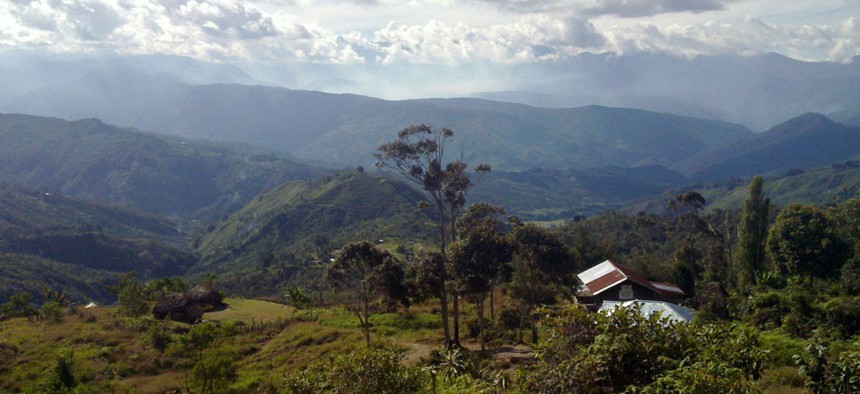How Even the Remotest Parts of the World Are Getting Mobile Coverage

That tree is a cellphone tower. Endaga
A new device is using regular radio spectrum to connect to mobile phones in its area.
For mobile operators, setting up shop in some of the remotest places on earth can bring rich rewards, but also tremendous risk. Sometimes the risk is too much—Digicel founder Denis O’Brien said his company lost nine people in “plane crashes, accidents, car crashes” when it was building its network in Papua New Guinea—and as often, the reward is too little. As a result, 10% of the world’s population lives in places without mobile coverage (pdf).
Endaga, a tiny startup that just raised $1.2 million in funding, may have another way.
As part of his doctoral work at Berkeley, Endage founder Kurtis Heimerl built a box that can be installed pretty much anywhere—the first one was fitted on a tree—and provide cellular coverage over a 10 km (6.2 mile) radius. The box uses regular radio spectrum to connect to mobile phones in its area, converting it to voice over internet protocol (VoIP) in order to connect to the rest of the world.
By the people
The clever bit is that Endaga doesn’t run the service. Instead of attempting to make money from cellphone services, Endaga leaves the running of the network to locals, who then take on the responsibility of installing it, attaching it to a power source, and finding an internet connection. The owner (or owners) of the box become micro-operators, charging as they see fit for the service. The power usually comes from a generator. Internet access is trickier. Sometimes there are nearby fiber lines. In other cases the operator pays for a satellite connection.
Leaving the running to locals also means lower running costs. Where big operators in faraway offices would need to build a road to install a tower, then bring in a diesel generator to power it and erect a fence to protect the fuel, a locally owned and run network can be maintained much more easily. Roshan, Afghanistan’s biggest operator, keeps its infrastructure running in a similar fashion, with locals taking on the task of protecting it.
Heimerl installed the first box at a school in the Papua province of Indonesia (the other half of the island that includes Papua New Guinea) in early 2013 as part of his PhD. He says the local operator brings in $2,000 in monthly revenue. The box itself sells for $6,000. “It is wildly profitable for the local school,” he says. (Another three boxes are on their way to customers now, but Heimerl declined to name them.)
Afoul of the law
It’s all wonderful in theory, but it is also illegal. Mobile networks pay several hundred million dollars for the privilege of using radio spectrum, a limited resource. Apart from small bands of public spectrum—used by Wi-Fi routers and microwaves for example—radio spectrum is owned and licensed out by governments.
Endaga’s boxes are in effect infringing on the regional network’s spectrum. But Heimerl says he doesn’t foresee trouble from operators and regulators. “We’re solving a core problem for them. There are government agencies dedicated to this problem [of rural access]. We come to them with this solution and they’re open to it,” he says.
NEXT STORY: Modernize and innovate with data virtualization





